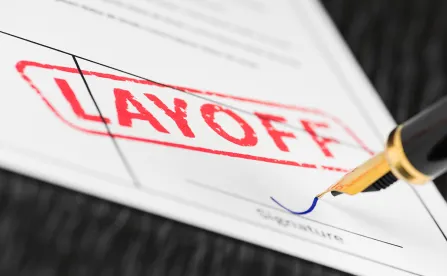Upon taking office, President Joe Biden, through an executive order, instructed the U.S. Department of Labor (DOL) to review prior guidance on the availability of an individual to receive unemployment benefits if the individual has refused to return to work or take new work due to a fear of contracting COVID-19. On February 25, 2021, the DOL issued new guidance related to a return to work under a scenario in which an individual feels unsafe. The DOL also extended unemployment coverage to educational workers and individuals impacted by part-time or reduced hours work.
The DOL’s Unemployment Insurance Program Letter No. 16-20, Change 5 instructs state unemployment agencies that individuals in the following three circumstances and categories are eligible to receive unemployment benefits:
-
“individuals who refuse to return to work that is unsafe or to accept an offer of new work that is unsafe”;
-
“certain individuals providing services to educational institutions or educational service agencies”; and
-
“individuals experiencing a reduction of hours or a temporary or permanent layoff.”
Unemployment benefits made available under these criteria will be funded through the federal Pandemic Unemployment Assistance (PUA) program. PUA is intended to be a benefit of last resort. These additional eligibility provisions apply retroactively to the beginning of the PUA program, though individuals who did not previously file for PUA “on or before December 27, 2020 are limited to weeks of unemployment [benefits] beginning on or after December 6, 2020.”
Safety-Related Application for PUA and Self-Certification
To apply for PUA, an individual must not be eligible for other state-based unemployment benefits. Application for PUA is a process that requires only self-certification. This includes a self-certification that the individual feels the workplace is unsafe and that the workplace is not following local, state and/or national safety guidelines. The federal government has put the onus on state unemployment agencies to ensure that eligible individuals only receive PUA funds.
With regard to individuals who “refuse to return to work that is unsafe or accept an offer of new work that is unsafe,” the DOL’s letter indicates that the intent of the federal program is to limit this application to workplaces that are “not in compliance with local, state, or national health and safety standards directly related to COVID-19.” The practical issue with this program involves the self-certification requirement of the PUA application. State unemployment resources, which are currently stretched very thin due to the pandemic, are needed to investigate self-certified claims of unsafe workplaces.
In an effort to recall workers to the workplace, employers should continue to follow local, state, and national safety guidelines. In addition, employers may want to communicate the safety plans put into place to their employees, especially upon recall to the worksite. Communicating with employees is a step to ensuring that employees have knowledge that their employers are in compliance with safety guidelines. Because this new expansion of unemployment assistance is a benefit provided under the federal PUA program, employers will not be responsible for paying for the benefit, employee eligibility for the program will not be reflected on quarterly unemployment charge statements, and there will be not be an impact on future unemployment tax rates for employers as a result of the program.
Education Institution Workers
The second expansion of unemployment benefits is related to individuals who provide services to educational institutions. The intent of the expansion is to address teachers and educational workers who may have been denied prior unemployment benefits due to the nature of teacher and educational contracts, as well as to address those education professionals for whom a contract renewal was not offered or whose workload was reduced because of COVID-19.
Partial Closures and Reduced Hours
The final extension of unemployment benefits relates to individuals who have endured partial closures or reduced hours of work due to COVID-19. Generally, individuals in covered employment who are laid off, experiencing reductions in hours, or working part-time as a result of partial business closures would qualify for state unemployment benefits and therefore would not be eligible for PUA. “However, such individuals may not be eligible for regular [state unemployment benefits] because, for example, they lack sufficient wages to qualify, have a previous disqualification, or have exhausted regular [unemployment benefits].” The extension of this benefit is limited to individuals who do not otherwise qualify for state unemployment benefits.
The application of these benefits will require state unemployment agencies to update their current systems and notify all persons who were previously denied unemployment benefits for the three reasons listed above. Local unemployment websites provide additional information on state-specific interpretations and applications of this guidance.




 />i
/>i
